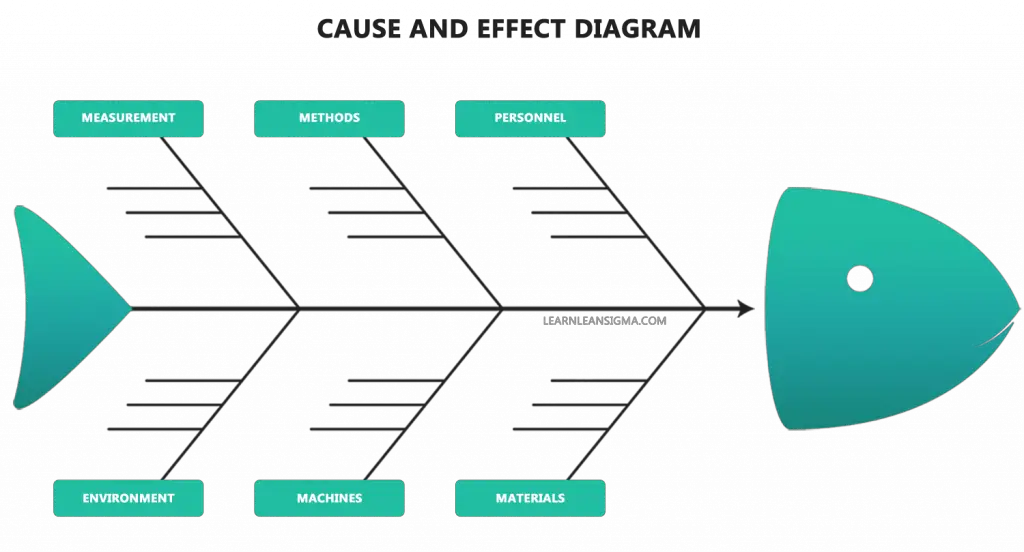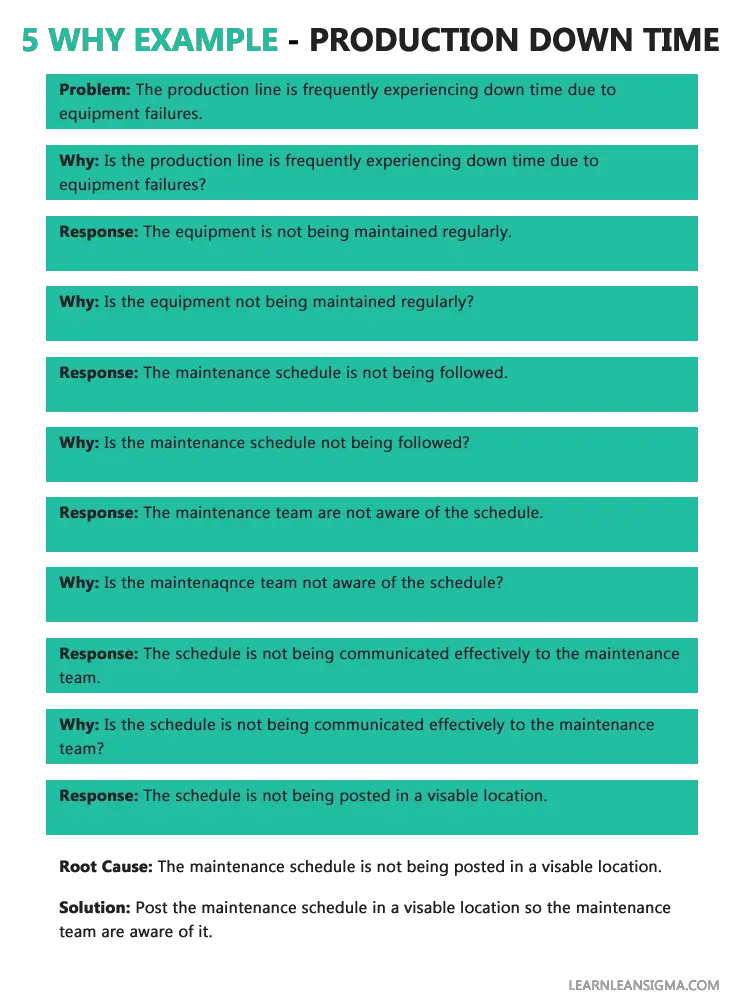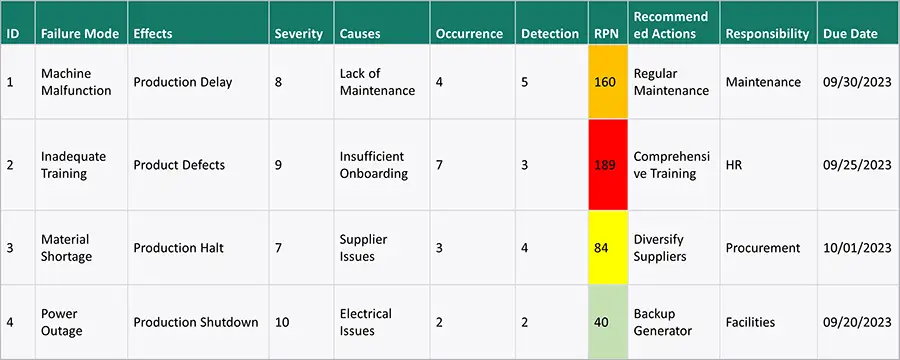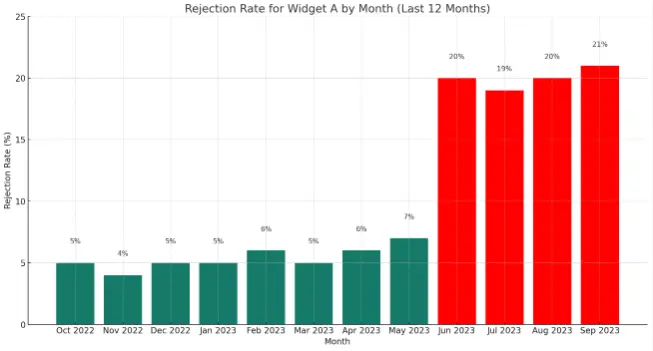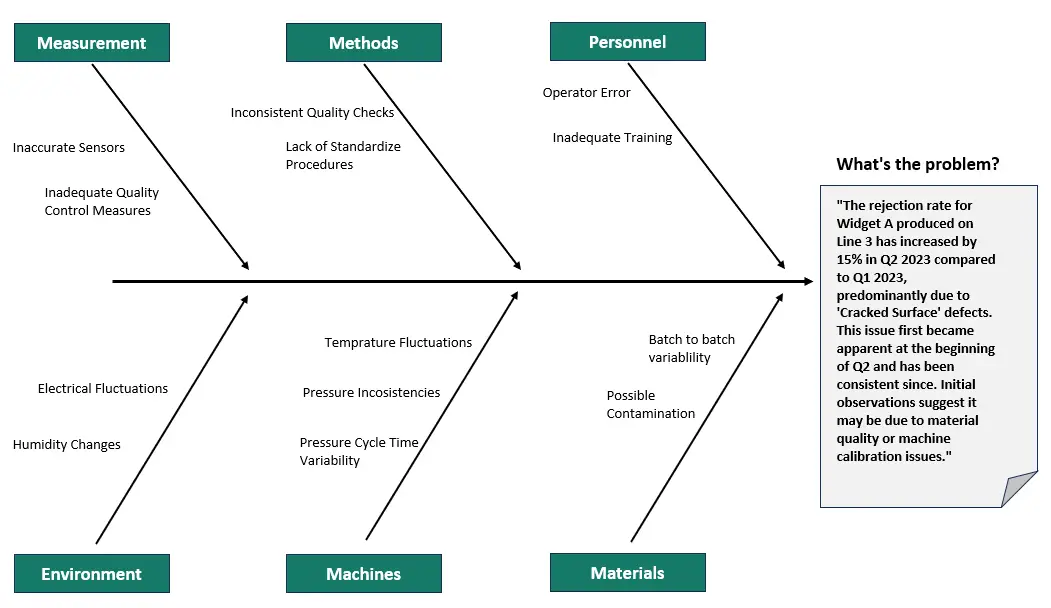Step 4: Determine the Root Cause
After identifying a list of possible causes, it’s time to put on your detective hat again and figure out which one is the real culprit—the root cause of your problem.

This is a critical step, as identifying the wrong cause can lead you down a path of ineffective solutions. Here’s how to go about it:
Review Your List of Possible Causes
Start by revisiting the list you made in the previous step. This will serve as your “suspect list” in identifying the root cause. At this point, you’ve already done some initial prioritization, so you have an idea of which causes are most likely.
Analyze the Data
Remember the data you collected in Step 2? Now is the time to dive deep into it. Compare each possible cause against the data to see if it holds up. Look for patterns, correlations, or anomalies that might point to one cause over the others.
For example, if you’re dealing with a decrease in product quality and one of your possible causes is “Faulty Raw Materials,” you could look at inspection reports, batch numbers, and supplier records to see if there’s a correlation.
Conduct Tests or Experiments
Sometimes, analyzing existing data isn’t enough. You might need to conduct additional tests or experiments to validate or rule out possible causes. For instance, if you suspect a machine is malfunctioning and causing a problem, you might run it under controlled conditions to see if the issue repeats.
Use Logical Reasoning
Sometimes the root cause isn’t obvious, even with data and testing. In such cases, logical reasoning can help. You might use deductive reasoning to rule out unlikely causes or inductive reasoning to generalize from specific observations.
Involve Experts
If you’re stuck or the root cause isn’t clear, don’t hesitate to consult experts. These could be internal team members with specific expertise or external consultants who specialize in the problem area you’re investigating.
Confirm the Root Cause
Before you move on to finding a solution, make sure you’ve found the real root cause and not just a symptom of a deeper issue. Validate your findings by asking:
- Does this cause explain most or all of the problem?
- If we fix this, is it likely that the problem will be solved?
- Do most team members agree that this is the root cause?
Once you’ve determined the root cause, document it clearly. You’ll use this information in the next step to develop and implement a solution that addresses the issue at its core, ensuring it’s less likely to recur in the future.
Determining the Root Cause of our Example
Continuing with our example, the cross-functional team now shifts its focus to determining the root cause of the increased rejection rate for Widget A. Armed with their prioritized list of possible causes and the data gathered, they delve into the next step of the RCA process.
The team begins by revisiting the “suspect list” generated using the Fishbone Diagram. Machine-related factors, particularly temperature fluctuations, pressure inconsistencies, and cycle time variability, are at the top of this list, followed by material quality concerns.
Analyze the Data
Digging deeper into the data collected, the team finds that the temperature, pressure, and cycle time increases directly correlate with the spike in the ‘Cracked Surface’ defect type. They also note that the unusual noises observed by machine operators started to occur around the same time the defects increased.
Conduct Tests or Experiments
To validate these observations, the team decides to run the molding machine under controlled conditions, varying one parameter at a time while keeping the others constant. After a series of tests, they discover that an increase in temperature directly leads to the ‘Cracked Surface’ defects in the widgets.
Use Logical Reasoning
Using deductive reasoning, the team rules out other possible causes. For instance, since all operators have completed mandatory training and the material batches show no signs of contamination, these are less likely to be the root causes.
Confirm the Root Cause
After careful consideration and validation, the team reaches a consensus that the root cause of the problem is “Temperature Fluctuations in the Molding Machine.” This conclusion satisfies the criteria for root cause identification:
- It explains most, if not all, of the ‘Cracked Surface’ defects.
- Fixing this issue is likely to resolve the problem.
- Most team members agree that this is the root cause.
The team documents this root cause clearly and prepares for the next step in the RCA process: developing and implementing a solution that will fix this issue at its core, thereby preventing its recurrence in the future.




